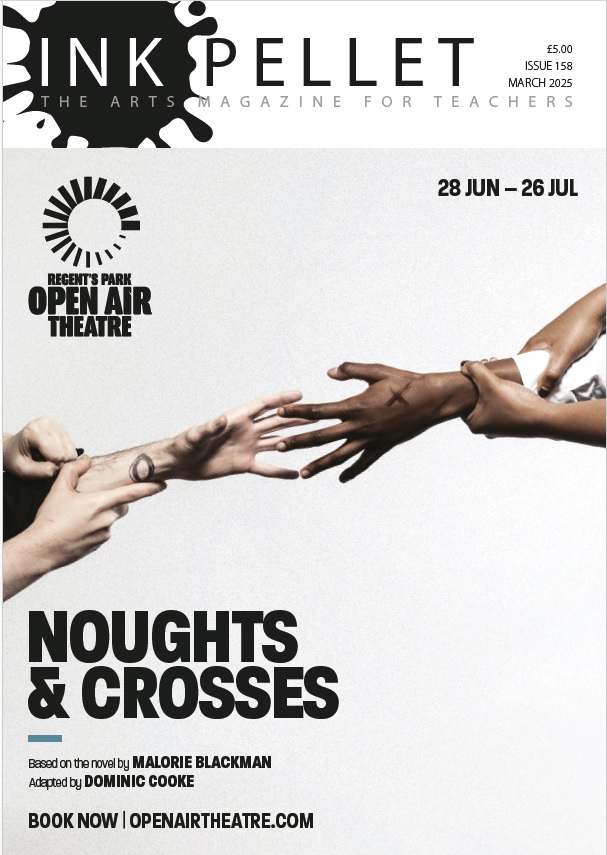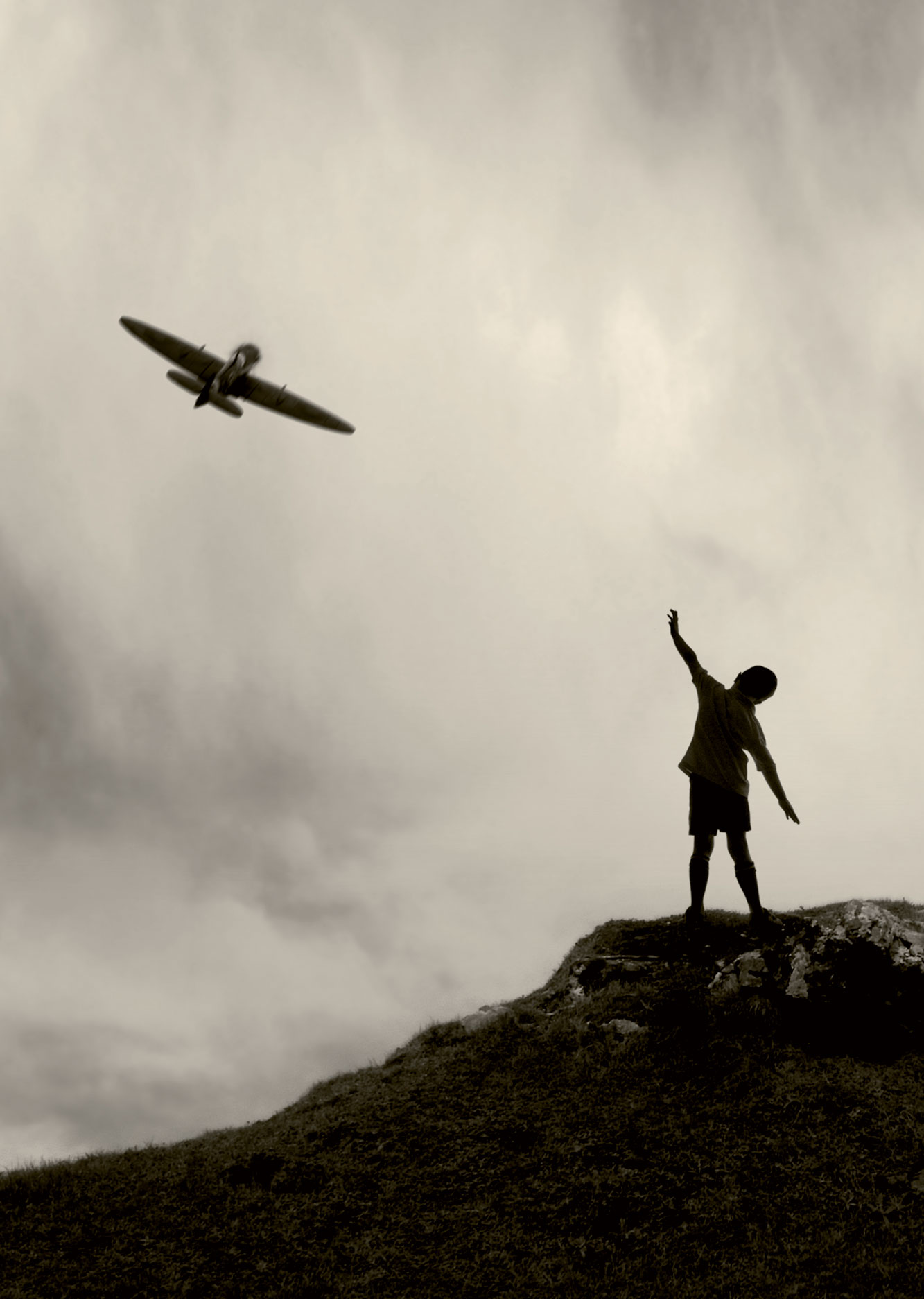We are delighted to feature the following reviews from young people who saw The Machine Gunners at the Polka Theatre in Wimbledon…
Review by Sebastian King
The Machine Gunners is a play that I shall never forget. It was a spectacular performance with thrilling, scary, sad, exciting and funny elements. The play centres on a boy who finds a machine gun in a German plane which has been shot down. He decides to start a secret army with his friends. The theme is an original and brilliant idea. I long to see this play again for the excellence of the actors, scenery and effects used. This is definitely the best thing that I have seen at Polka Theatre. A first class performance that I would recommend to all.
Review by Abigail Jordan
Churchill’s voice opens the show along with a black and white video of planes at war.
This gripping novel by Robert Westall has been successfully abridged and adapted for the stage by Ali Taylor. The play immediately informs you that it is based in the Second World War, lived through by our grandparents, something children today should know about.
The play makes you really think about how desperate everyone was at that time, and how certain people feared that the Germans were going to invade. The characters portrayed that fear excellently, making the audience tense and hooked on to the actors every word. The audience was full of anticipation as you never quite know whose house would be bombed next, and if it would be one of ‘The Machine Gunners’.
The set up of the stage was very thoughtful as it looked a bit like a bombsite and could easily be converted into any scene required. The actors used the space well and made the most of the few props.
This play was well paced and excellently acted. The character Clogger (a member of the Machine Gunners) was slightly weak in the book but the actor managed to improve him. Rudi (a lost German) was acted strongly and kept his accent from beginning to end.
Review by Alexandra King
The Machine Gunners is one of the best plays I have ever seen at the Polka Threatre. The actors were brilliant and it made me feel as if I was in the war. The sounds effects used for the aeroplanes sounded so real that I felt as though I was really there. When the group of friends, the central characters of the play, shot down a German plane, the idea of having a small model of a person floating down on a parachute was fantastic. The use of scenery and props was excellent, especially when Boddser put Chas McGill’s head right under the water. Instead of having an under-the-water-scene, they just had green bubbles and waves which was effective. This play was so captivating I would love to see it again. I shall certainly never forget the experience and am recommending it to all my friends.
Review by Stephen Judt
I saw The Machine Gunners today and would like to make the following comments:
- It is an exciting and heart warming story
- The scenery is dazzling
- It’s a sad and unexpected ending
- 9-12 is the correct age group
- The fighting scenes were very good.
Review by India Whitehurst
The Machine Gunners has a very gripping plot. It is set in Garmouth, a fictional town on the coast, in the North East of England during the Second World War. The story is about a group of schoolchildren who find a machine gun in a German plane which has crash landed in the nearby woods.
The local constable, Sergeant Hardy (nicknamed Fatty by the children), realizes that a gun has gone missing from the plane, and is immediately suspicious that it is the children’s doing. It is Chas, Cem, Clogger, Audrey and Nicky’s job to protect the gun from prying eyes. Boddser, the school bully, and Chas have been rivals to have the best collection of war souvenirs in Garmouth. Boddser knows that they have the machine gun and keeps threatening to hand them over to the police.
There have been nightly German bombing raids over Garmouth, destroying houses and people’s lives, so the friends build a lookout post, – Fortress Caporetto – at the end of Nicky’s garden as they fear an invasion, and soon see a German Heinkel Bomber zooming towards them. They shoot at it but narrowly miss and it is an RAF Spitfire that sends it spinning to the ground. The German pilot, Rudi, parachutes from the plane and finds his way to the camp. The friends capture him and make a deal that if he will fix the machine gun, they will find him a boat to sail back to Germany in. There is a twist in the ending and it is deeply moving.
The play was very realistic and believable. It opened with genuine black and white footage from WW2. Also, we found out that many of the props and costumes were real or exact replicas. The special effects and lighting were extremely effective. For example, when there was a fight, and Boddser was dunking Chas into the pond, the change of lighting made you feel like you were under the water too.
Afterwards, we had a Q&A session with the actors and had the opportunity to discuss the play. It was fascinating to find out how the play had been put together, from learning lines and accents, and how the play was adapted from the book by Robert Westall, to what the actors do in the interval! It is definitely worth a visit to the Polka to see The Machine Gunners.
Review by Matthew Eagling
The play started with the brilliant effect of a Heinkel and a Spitfire engaged in a dogfight above Britain.
The stage was obscured by a net curtain and in the centre of the screen was footage from the Imperial War Museum of a dogfight in World War 2. On each side of the stage the screen would be lit up from behind and show the crew of either the bomber, or the Spitfire, acting as though they were fighting each other, relaying commands and dropping bombs while flying the planes.
The story revolves around a machine gun that the children found in the crash site. When the machine gun accidentally goes off not only is there the sound of the gun but there are flashing lights like the sparks of the gunpowder in the bullets igniting. This made the gun seem very realistic and if one of the characters was aiming the gun towards the audience, it felt mildly threatening.
One part of the play that I quite liked was that the tail end of the bomber, which the story was based around, was used for all sorts of things, rubble, part of a class room and a pond.
The acting in the play was extremely good. After a few minutes I stopped thinking of the actors as adults and started thinking of them as children when they played those parts. When one of the ‘little gangs’ house was bombed and his mother and pets killed, the actor cried so effectively and realistically that my mother and brother were in tears and it brought me close to tears too.
In the play there were only 6 actors and 5 had multiple roles. The actors switched flawlessly between roles in such a way that you felt there were a lot more actors.
The play is incredibly moving and hugely enjoyable. For anyone who has read the book it is closely aligned so doesn’t produce any disappointment if you have read The Machine Gunners beforehand.
I would recommend the play to an age group of 10 and up, especially those doing World War 2 on their school curriculum because the play gives a good insight to life in Britain during the Blitz.



